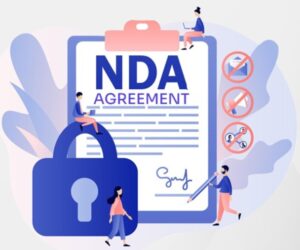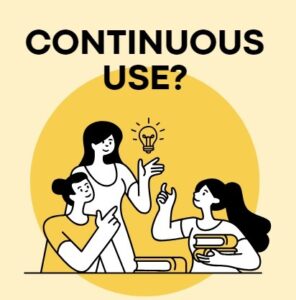The authorship and ownership of copyright in India is distinct. The concept of ‘ownership’ and ‘authorship’ in India becomes vital when the question of propriety over the copyright arises. This article aims to provide a thorough explanation of both concepts.
Who is the Author under Indian Copyright Law?
The Indian copyright law distinguishes between authorship and ownership of copyright in India. An author is someone who actually writes, composes or creates the work utilizing his or her creativity, imagination and intellectual abilities. The author of a particular copyrighted work can also be owner of the work if such work is not created under the employment or direction from some other person.
The ownership of a copyrighted work can vary depending on the conditions surrounding its creation but an author will always remain the creator of the work because the authorship has been rewarded in order to appreciate the efforts that an author put into the creation of the work. The copyright Act, 1957 establishes a general rule that the author is the first owner of a copyright and the exceptions to this rule has been laid down under section 17 of the act, which also explains the difference between the authorship and the ownership of a copyright.
The rights of a copyright owner in India are wide, including the right to reproduce the work, the right to convey the work to the public, the right to adapt, translate, and many more. Whereas the author of the work does not have such a broad range of rights, the author’s rights are limited to the right of receiving remuneration for the work created and the moral rights of being known as the creator of the work (right to paternity) and protecting the work from exploitation (right to integrity).
The creator of a literary or dramatic work is referred to as the author in general, but under the copyright act, any individual who causes a work to be done is the author of that particular work. Section 2(d) of the Copyright Act of 1957 establishes a list of authors for various types of work protected by copyright. The section reads as follows:
- The author of a literary or dramatic work shall be the author.
- In musical works, the composer is the author.
- In artistic works, the artist is the author.
- The author of a photograph is the person who takes the photograph.
- The producer of a cinematographic film is the author.
- The author of a sound recording shall be the producer of such sound recording.
Who is the Owner under Indian Copyright Law?
As previously stated, the author of the work may also be the owner of the work; but, if the work is created in exchange for any consideration or in the course of employment, the person under whose direction the work is created becomes the owner of the work.
For instance, if a person X hires another person Y, who is an application developer, to develop an application for his business under a service agreement, then X will be the owner of such an application and Y, who developed the application under X’s employment in exchange for monetary compensation, will have authorship of the application. On the contrary, if Y had created the application for himself or his business, he would have been both the author and the owner of the application.
Exceptions to the General Rule – ‘Author is the first Owner’
The exceptions to the general rule that the author is the first owner of copyright is laid forth in Section 17 of the Indian Copyright Act, 1957, which states that a person who pays or provides resources for a work to be created is the first owner of such work. Let us take a closer look at these exceptions.
| Section 17 | Subject matter |
| Clause (a) | Literary, dramatic & artistic work |
| Clause (b) | Photograph, painting, engraving, cinematographic film |
| Clause (c) | Work made under course of employment |
| Clause (cc) | Lectures delivered in public in behalf of another |
| Clause (d) | Work assigned by government |
| Clause (dd) | Work made on behalf of a public undertaking |
| Clause (dd) | Work of certain international organization |
• Section 17(a) – Literary, Dramatic & Artistic Work
This clause states that if an author creates a literary, dramatic, or artistic work while working for the owner of a newspaper, magazine, book, or other publication under a contract for publishing such work, the owner of such newspaper or magazine becomes the first owner of the copyrighted work, unless an agreement to the contrary is in place.
Illustration – A journalist or writer working in a newspaper house is never the owner of the work he produces; only authorship is his.
• Section 17(b) – Photograph, painting, engraving, cinematographic film
This paragraph states that anytime a photographer is paid to take photographs, a painter is hired to paint, and a cinematographer is hired to shoot a film, the person who hired or caused such work to be done becomes the first owner of the copyright.
Illustration – A painter hired by a school to paint the school’s boundary walls with storytelling paintings presenting social and moral values will not be the first owner of the paintings he made, but the school that hired the painter will be.
• Section 17(c) – Work made under course of employment
This section states that if a work is made during the course of employment or a service contract, the employer becomes the first owner of such copyrighted work.
In the well-known case of V.T. Thomas and Others vs Malayala Manorama Co. Ltd, the employee, an artist, created a cartoon character prior to his employment with the publishing house Manorama and continued to use it after his job terminated. The publishing house claimed that they were the first owners of the copyright because the cartoon was utilized while the artist was working for them. Although the cartoon was utilized by Manorama, it was not created by the artist during his employment with them; hence he was the sole owner of the artwork.
In another case of Neetu Singh vs Rajiv Saumitra, the court agreed that the defendant had served as a director of a company for two years, but the plaintiffs were unable to prove that the literary work authored by the defendant was part of his employment obligations.
• Section 17(cc) – Lectures delivered in public in behalf of another
This clause states that if a person provides a speech in public on behalf of another person, the person on whose behalf the speech was delivered is the original copyright owner, not the person giving the speech.
• Section 17(d) – Work assigned by government
If a copyrightable work is created as a result of a government tender, the government will be the first owner of the copyright deriving from and accruing to such works.
For example, the Indian government owns the copyright on the “statue of unity,” not the engineers or architects who designed or built it.
• Section 17 (dd) – Work made on behalf of a public undertaking
In the absence of an agreement to the contrary, if a work is created or first published by or under the control or direction of a public undertaking, that public undertaking will be the original owner of Copyright.
• Section 17(dd) – Work of certain international organization
If an international organization commissions someone to create a copyrightable work on its behalf, that organization will be the original owner of the work.
Conclusion
As mentioned, it is understood that the copyright law draws a line of distinction between ownership and authorship in India. Although the author will always be credited as the creator of the work that he or she has produced in the past, ownership of the work may not necessarily remain with the original creator. The general rule that the author is the first owner has exceptions outlined in section 17, but if there is a contrasting agreement between the parties in the course of employment, then the ownership can be altered based on this understanding.







